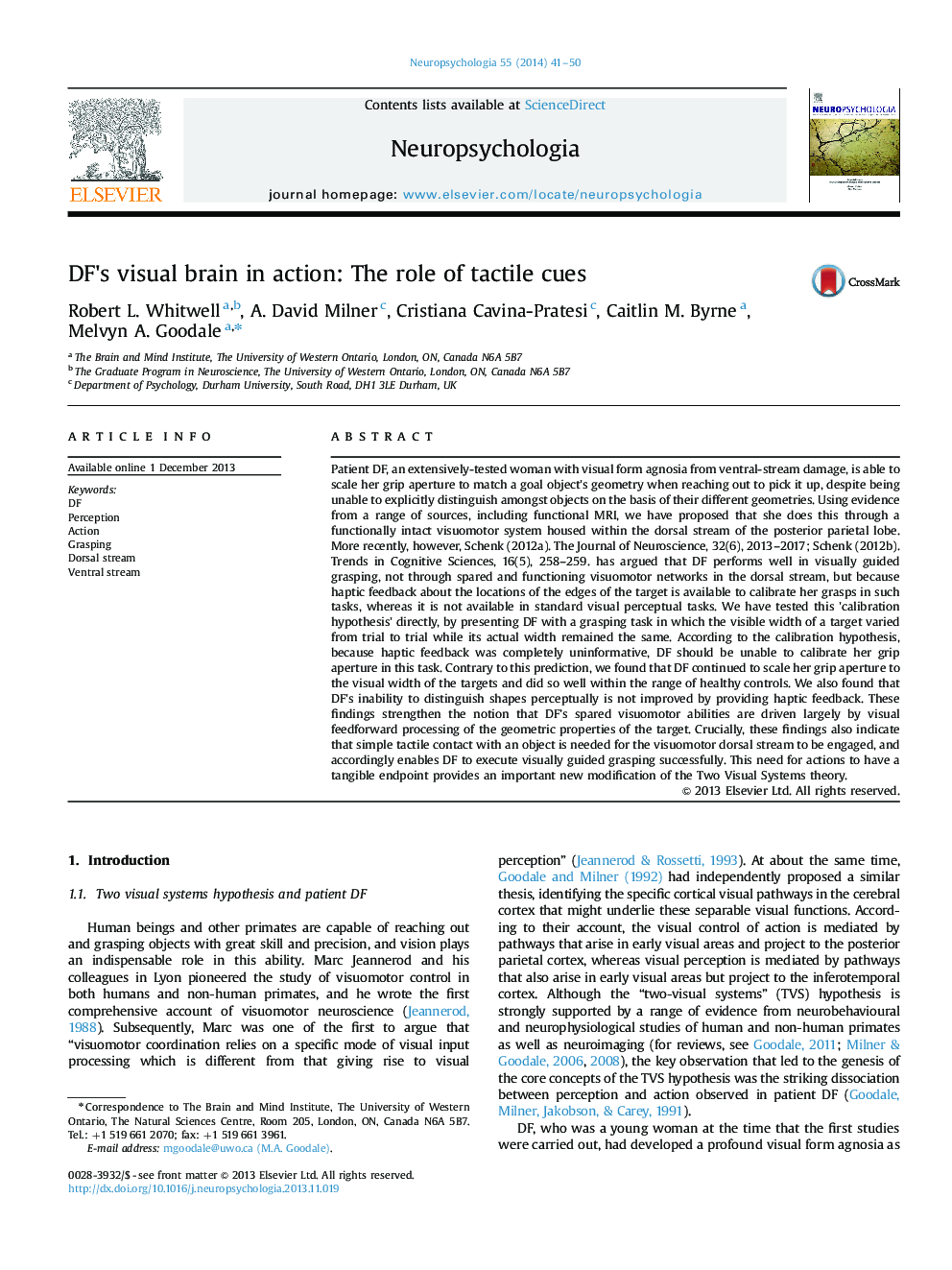| کد مقاله | کد نشریه | سال انتشار | مقاله انگلیسی | نسخه تمام متن |
|---|---|---|---|---|
| 7321823 | 1475598 | 2014 | 10 صفحه PDF | دانلود رایگان |
عنوان انگلیسی مقاله ISI
DF's visual brain in action: The role of tactile cues
دانلود مقاله + سفارش ترجمه
دانلود مقاله ISI انگلیسی
رایگان برای ایرانیان
کلمات کلیدی
موضوعات مرتبط
علوم زیستی و بیوفناوری
علم عصب شناسی
علوم اعصاب رفتاری
پیش نمایش صفحه اول مقاله

چکیده انگلیسی
Patient DF, an extensively-tested woman with visual form agnosia from ventral-stream damage, is able to scale her grip aperture to match a goal object's geometry when reaching out to pick it up, despite being unable to explicitly distinguish amongst objects on the basis of their different geometries. Using evidence from a range of sources, including functional MRI, we have proposed that she does this through a functionally intact visuomotor system housed within the dorsal stream of the posterior parietal lobe. More recently, however, Schenk (2012a). The Journal of Neuroscience, 32(6), 2013-2017; Schenk (2012b). Trends in Cognitive Sciences, 16(5), 258-259. has argued that DF performs well in visually guided grasping, not through spared and functioning visuomotor networks in the dorsal stream, but because haptic feedback about the locations of the edges of the target is available to calibrate her grasps in such tasks, whereas it is not available in standard visual perceptual tasks. We have tested this 'calibration hypothesis' directly, by presenting DF with a grasping task in which the visible width of a target varied from trial to trial while its actual width remained the same. According to the calibration hypothesis, because haptic feedback was completely uninformative, DF should be unable to calibrate her grip aperture in this task. Contrary to this prediction, we found that DF continued to scale her grip aperture to the visual width of the targets and did so well within the range of healthy controls. We also found that DF's inability to distinguish shapes perceptually is not improved by providing haptic feedback. These findings strengthen the notion that DF's spared visuomotor abilities are driven largely by visual feedforward processing of the geometric properties of the target. Crucially, these findings also indicate that simple tactile contact with an object is needed for the visuomotor dorsal stream to be engaged, and accordingly enables DF to execute visually guided grasping successfully. This need for actions to have a tangible endpoint provides an important new modification of the Two Visual Systems theory.
ناشر
Database: Elsevier - ScienceDirect (ساینس دایرکت)
Journal: Neuropsychologia - Volume 55, March 2014, Pages 41-50
Journal: Neuropsychologia - Volume 55, March 2014, Pages 41-50
نویسندگان
Robert L. Whitwell, A. David Milner, Cristiana Cavina-Pratesi, Caitlin M. Byrne, Melvyn A. Goodale,